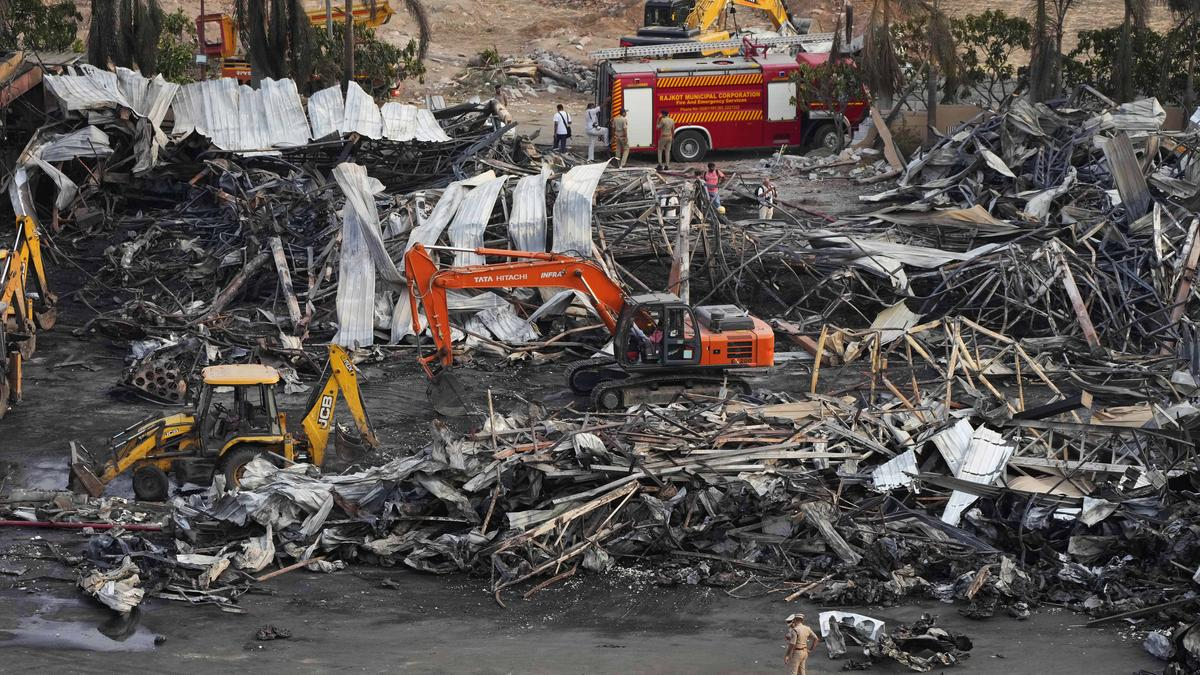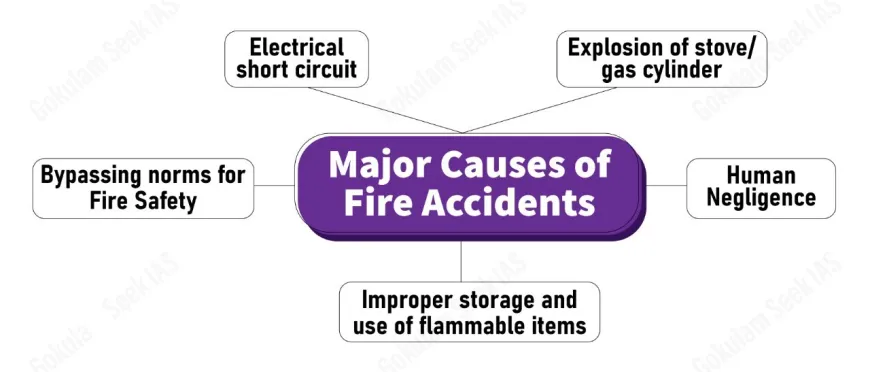Free Courses Sale ends Soon, Get It Now


Free Courses Sale ends Soon, Get It Now



Copyright infringement not intended
Picture Courtesy: https://www.thehindu.com/news/national/on-fire-safety-regulations-in-india-explained/article68226258.ece
Context: The recent fires in Rajkot and Delhi highlight the urgent need for robust enforcement of fire safety regulations and compliance to prevent future tragedies.
Details

Fire Safety Importance
Growth in Construction and Fire Risks
Importance of Fire Safety Regulations
Key Regulatory Frameworks
National Building Code (NBC), 2016
Important Features of NBC 2016
Specific Provisions in NBC 2016
Other Provisions under different rules and regulation
|
Fire safety audits are crucial for assessing and enhancing fire safety standards in buildings and workplaces. They help identify potential fire hazards, ensure compliance with the NBC and state-specific rules, and validate adherence to fire safety norms. |
Conclusion
Source:
|
PRACTICE QUESTION Q. A wildfire is raging through a protected forest area, threatening the lives of both wildlife and nearby communities. As a member of the disaster management team, you have the authority to decide on the course of action. What ethical considerations should guide your decisions? A) Utilitarianism: Maximise the overall well-being by prioritising human lives and property B) Environmental ethics: Prioritise the protection of the natural habitat and wildlife C) Justice: Ensure fair distribution of resources and assistance to affected communities D) Beneficence: Act in the best interests of all stakeholders, including humans and animals Answer: D |
© 2024 iasgyan. All right reserved